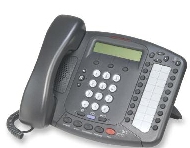|
IP Hard Phones
Having used the
X-Lite
softphone to prove that I was going down the right
lines (ooops, no pun intended!), the next step was to try using
hardware IP phones. As ever, I thought that the best place to
start was eBay where you seem to be able to pick up a wide range
of hardware phones at reasonable cost.
So, which phone to choose ? Having had no experience at all
of IP Telephony, that wasn't an easy question, the range of
phones (and prices) on eBay was staggering, well, it surprised
me anyway. As an aside, since IP phones are obviously intended
for an office environment, many of the IP phones that are
available are not "aesthetically pleasing", i.e., they are UGLY
- particularly if you're planning on putting one in the lounge!
Anyway, I did what "googling" I could and read a whole range of
articles on different phones but was still very much in the
dark.
I decided to take the plunge and look for a phone from one of
the big name manufacturers which supported Session Initiated
Protocol (SIP). I'd read enough to know that SIP is a standard
protocol used for establishing sessions in an IP network, with
SIP being a core part of FreeSwitch. For a
detailed description of the SIP protocol, go
here or see the Wikipedia page
here.
So, a SIPv2 compatible phone from 3Com would do the trick
- right ?
| WRONG ! - I
purchased a cheap (thankfully) 3Com 3102 Business Phone
on eBay and tried to get it to talk to FreeSwitch
- my first mistake ! Although I could get the phone to pick up
its IP address from my DHCP server and it could "see" the
FreeSwitch server, it refused to connect. |
 |
After quite a bit more "googling", I eventually posted a question in the
FreeSwitch
mailing list and very quickly got the answer that I
was starting to suspect.
"3COM phones are locked to either a 3COM PBX or the
special Asterisk edition locked-down by 3COM. You cannot make
them work with either FreeSWITCH or any other open SIP server
other than 3COM IP PBX systems."
This was disappointing, not just because of the waste of
time, money and effort trying to get the 3Com phone to work, but
also, as the photo shows, despite my comment above, the 3Com
3102 is quite a neat looking phone that would not have looked
too out of place in the home, although, not necessarily in the
lounge !
So, the lesson here is pretty clear - make sure that you
know
that the phone(s) that you select will work with
FreeSwitch, or indeed, any other IP telephony system
that you plan on using it with before you buy it. The
FreeSwitch
Wiki
has a useful
interoperability list of different devices which
have been proven to work with FreeSwitch or you
can always post a message in the
mailing list.
This a maybe a good place to mention phone provisioning
too. The term will be familiar to anyone who knows about IP
telephony, but not to those new to the field - like me!
Obviously, manually configuring IP phones in medium/large
installations would be impractical. Typically, the phones are
configured by the system administrator using XML files which are
automatically downloaded to the phone when it is powered on or
rebooted. For a very small installation, i.e., a domestic
setting, it may be feasible to manually configure your phones,
but it is far better to become familiar with the provisioning
techniques applicable to your phone(s). Phone provisioning will
come up later as I discuss how I eventually configured other IP
phones to work on my system.
After my aborted attempts to configure the 3Com phone, and
after checking the interoperability list, I then picked up a
Cisco 7940 Series IP Phone and had much more success. My
experience with the 7940, as well as my experiences with other
IP phones can be found by following the links in the table below
:
|